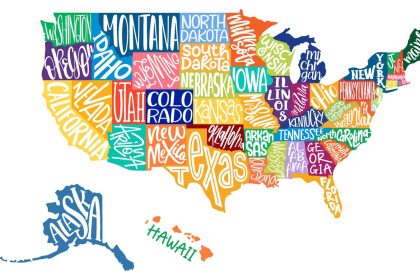A backdoor Roth IRA typically offers high-income earners a workaround to contribute directly to a Roth IRA when their earnings are above IRS income limits. This strategy could allow you to take advantage of tax-free growth and withdrawals in retirement. Reporting a backdoor Roth IRA contribution on your taxes is relatively straightforward. But doing it incorrectly could end up costing you money. A financial advisor can help optimize your nest egg to lower your tax liability.
What Is a Backdoor Roth IRA?
For many individuals, the Roth IRA is a desirable choice due to its tax-free growth and withdrawals. However, not everyone can contribute directly to a Roth IRA as there are income limits that restrict high earners. In 2024, single filers must earn less than $146,000 to contribute to a Roth IRA (up to $240,000 for married couples filing jointly). Once your income surpasses these thresholds, you’re no longer eligible to contribute directly to a Roth IRA.
This is where the backdoor Roth IRA comes into play. It’s a strategy used by those who earn too much to qualify for direct Roth IRA contributions. The process begins with making a non-deductible contribution to a traditional IRA, which doesn’t have income limits for contributions. Then, you can convert the traditional IRA to a Roth IRA, which is allowed regardless of your income level.
While this strategy can offer you tax-free investment growth and withdrawals in retirement, these benefits are most advantageous based on your current and expected future tax situations. Additionally, Roth IRAs are not subject to required minimum distributions (RMDs) during your lifetime, which may provide you with greater flexibility and potential tax advantages.
How to Report Your Backdoor Roth IRA
Follow these six basic steps to report your backdoor Roth IRA:
- Contribute to a traditional IRA: First, make a non-deductible contribution to your traditional IRA account. Ensure that you have documentation to show that you made after-tax contributions.
- Convert to a Roth IRA: Convert the traditional IRA funds to a Roth IRA, typically by requesting a trustee-to-trustee transfer or by liquidating the traditional IRA and contributing to the Roth IRA within 60 days.
- Report the contribution: When you file your taxes, you’ll need to report the contribution to your traditional IRA by using Form 8606. This will indicate the amount of the nondeductible contribution.
- Report the conversion: You’ll also need to report the conversion from your traditional IRA to the Roth IRA. This is also done on Form 8606.
- Pay taxes (if applicable): If you’ve made any gains on your traditional IRA contributions before converting to a Roth IRA, you’ll owe taxes on those gains. This is because traditional IRA contributions are typically tax-deferred, meaning you haven’t paid taxes on the funds yet. When you convert to a Roth IRA, you’re essentially “unlocking” those funds and moving them to a Roth, which requires you to pay taxes on any pre-tax amounts.
- Keep records: It’s essential to document your contributions and conversions. This includes keeping track of the amounts contributed to your traditional IRA, any gains or losses, and the amounts converted to your Roth IRA.
If you’re unsure about any aspect of reporting your backdoor Roth IRA contribution, or if you have a complex financial situation, you want to consult a tax professional. They can offer you personalized advice based on your specific circumstances and help ensure that you meeting IRS requirements.
Form 8606 and Other Required Documents

The IRS mandates the use of Form 8606 to report nondeductible contributions to traditional IRAs and any subsequent conversions to Roth IRAs. Failure to report these transactions can lead to a 10% tax on underpaid amounts and a $50 penalty for not filing Form 8606. Furthermore, if excess contributions are not reported, individuals may face a 6% tax for each year the excess remains in their account.
Part I in Form 8606 is used to disclose non-deductible contributions made to traditional IRAs, establishing the basis for after-tax assets in the account. Part II accounts for the conversion from a traditional IRA to a Roth IRA, and any taxable events that may arise.
In addition to Form 8606, several other documents are indispensable for reporting a backdoor Roth IRA conversion. Here are six important forms you may need to consider:
- Traditional IRA contribution statements
- 1099-R forms
- Brokerage account statements
- Form 5498
- Prior year tax returns
- Records of recharacterizations
Bottom Line

The tax requirements for a backdoor Roth IRA involve reporting nondeductible contributions to a traditional IRA and subsequent conversions to a Roth IRA on Form 8606. Failing to do so, could cost you more money in IRS penalties and additional taxes on the converted amount.
Tips for Tax Planning
- A financial advisor with a specialization in tax planning can guide you in lowering your tax liability. Finding a financial advisor doesn’t have to be hard. SmartAset’s free tool matches you with up to three vetted financial advisors who serve your area, and you can have a free introductory call with your advisor matches to decide which one you feel is right for you. If you’re ready to find an advisor who can help you achieve your financial goals get started now.
- If you’re not sure how much you need to save for retirement then you may want to utilize a free retirement calculator.
Photo credit: ©iStock.com/vorDa, ©iStock.com/GeorgeRudy, ©iStock.com/StefaNikolic
Read the full article here





